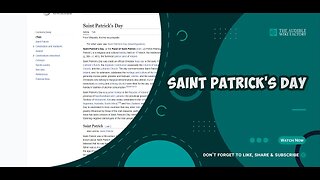The Mahogany Ship is a putative early Australian shipwreck that is believed by some to lie
The Mahogany Ship is a putative early Australian shipwreck that is believed by some to lie beneath the sand in the Armstrong Bay area, approximately 3 to 6 kilometres (1.9 to 3.7 mi) west of Warrnambool in southwest Victoria, Australia. In many modern accounts it is described as a Spanish or Portuguese caravel after the wreck was associated with the theory of Portuguese discovery of Australia by Kenneth McIntyre in his 1977 book The Secret Discovery of Australia. The most recent research has questioned this theory and provided other explanations.
Three Mahogany Ship Symposia have been conducted in nearby Warrnambool: in 1981, 1987 and 2005, attracting significant public and academic interest and the contributions of Manning Clark, Barry Jones, Kenneth McIntyre, Lawrence Fitzgerald, Ian McKiggan, Bill Richardson, Edmund Gill, Jack Loney and many others.
EYEWITNESS ACCOUNTS
While there is no conclusive evidence such a wreck exists today, nineteenth-century accounts of the relic persist both in popular folklore and in publications of varying academic rigour. In the 1980s and 1990s, writers Jack Loney and Ian McKiggan documented the accounts of a number of purported nineteenth century eyewitnesses to the wreck. While these were of varying degrees of detail, they indicate a strong local tradition about the wreck in the area. Commenting on the surge of interest in the wreck that appeared at the end of the nineteenth century, Loney observed that research on the wreck was often based around "loosely written words, sometimes presented from hearsay, sometimes from people who could barely read or write, and in most cases from some recalling memories forty or fifty years old." McKiggan took a more liberal view, sharing the opinion of well-known local historian Jack Powling, who wrote "When people knew it, and could see it, they called it 'The Old Wreck;' it was only after it disappeared... that it was given the romantic and slightly misleading name of 'The Mahogany Ship.' Much has been written about it, and much of what has been written has been frankly a good deal of nonsense... Legend by now it may be, but the Old Wreck is no myth..." In 2005, Murray Johns also documented the nineteenth century eyewitnesses to the wreck, but found they fell into three distinct groups – those who placed the wreck in the sea, a second group who said it was on the beach, a third group who identified it as high up in the sand dunes. This has led Johns to conclude the accounts were describing three separate wrecks.
The earliest documented account of a wreck in the area was carried by a Portland newspaper article of 1847 which described "a wreck, about two miles on the Belfast side of Warrnambool…of…a three hundred ton vessel …thrown completely into the [sand] hummocks". The article went on to connect the wreck to the 1841 discovery of a number of articles of French manufacture found strewed along the beach. In 1981, writer Ian McKiggan also found further evidence of an 1841 French shipwreck in the area in the journal of Government Surveyor C.J. Tyers. Tyers wrote that the wreckage (including a keg containing a boat compass by maker Devot of Harve) indicated an unknown French whaler had been lost in the area.
Researcher Jenny Williams Fawcett describes the "1836 Hopkins River Incident" as a foundation myth of the Mahogany Ship story. A popular version of this story was included in The Book of the Bush by George Dunderdale, in 1898, as follows:
In January, 1836, Captain Smith, who was in charge of the whaling station at Port Fairy, went with two men, named Wilson and Gibbs, in a whale boat to the islands near Warrnambool, to look for seal. They… found the mouth of the river Hopkins. In trying to land there, their boat capsized in the surf......
LINK TO ARTICLE: http://en.wikipedia.org/wiki/Mahogany_Ship
TAGS: Mahogany Ship, Urban legends, Shipwrecks of Victoria (Australia), Pseudoarchaeology, Pre-1606 contact with Australia, Maritime folklore, European exploration of Australia, Australian folklore
#GeneralKnowledge #AudibleWikiFactory #Audible #Wikipedia #MahoganyShip
-
 34:34
34:34
The Audible Wiki Factory
1 year agoSaint Patrick's Day, or the Feast of Saint Patrick, is a religious and cultural holiday held on
724 -
 56:19
56:19
Total Horse Channel
2 days ago2024 Buckeye Reining Series | Saturday Night | 7:30 pm EST
19.1K1 -
 1:15:38
1:15:38
Steve-O's Wild Ride! Podcast
2 days ago $0.22 earnedG Eazy Opens Up About Falling Off - Wild Ride #217
23.8K11 -
 18:44
18:44
We Profit with Stock Curry
6 days agoUltimate Advice for Teens & Young Adults
29.2K13 -
 LIVE
LIVE
Lofi Girl
1 year agoSynthwave Radio 🌌 - beats to chill/game to
238 watching -
 21:00
21:00
Mr. Build It
23 days ago3 Ways to Build Garden Beds
29.7K14 -
 1:42:14
1:42:14
Jewels Jones Live
1 day agoDETRANS w/ special guest Mary Margaret Olohan | A Political Rendezvous - Ep. 78
36.8K20 -
 1:36:46
1:36:46
Roseanne Barr
1 day ago $73.82 earnedFor Love of Country with Tulsi Gabbard | The Roseanne Barr Podcast #50
152K424 -
![[D2] Rumble Featured!! Lets Go!!! #RumbleTakeOver](https://hugh.cdn.rumble.cloud/s/fw/s8/1/5/g/l/6/5gl6r.0kob-small-D2-Onslaught-Grind-w-Some-P.jpg) 6:28:15
6:28:15
CHiLi XDD
12 hours ago[D2] Rumble Featured!! Lets Go!!! #RumbleTakeOver
45.8K7 -
 2:45
2:45
Chicks in the Office
11 hours agoHolly Madison Talks Reconciliation with Kendra Wilkinson
59.6K37